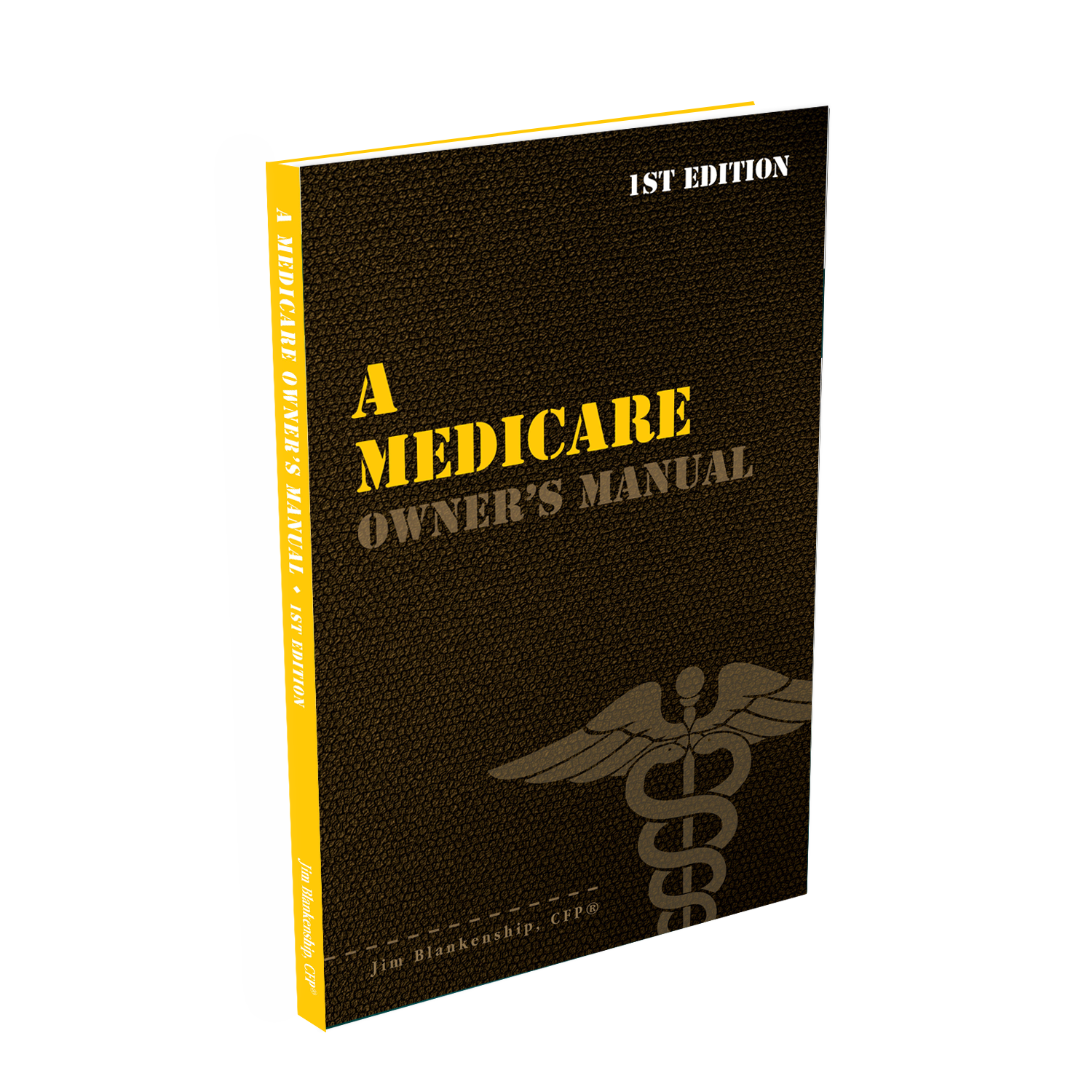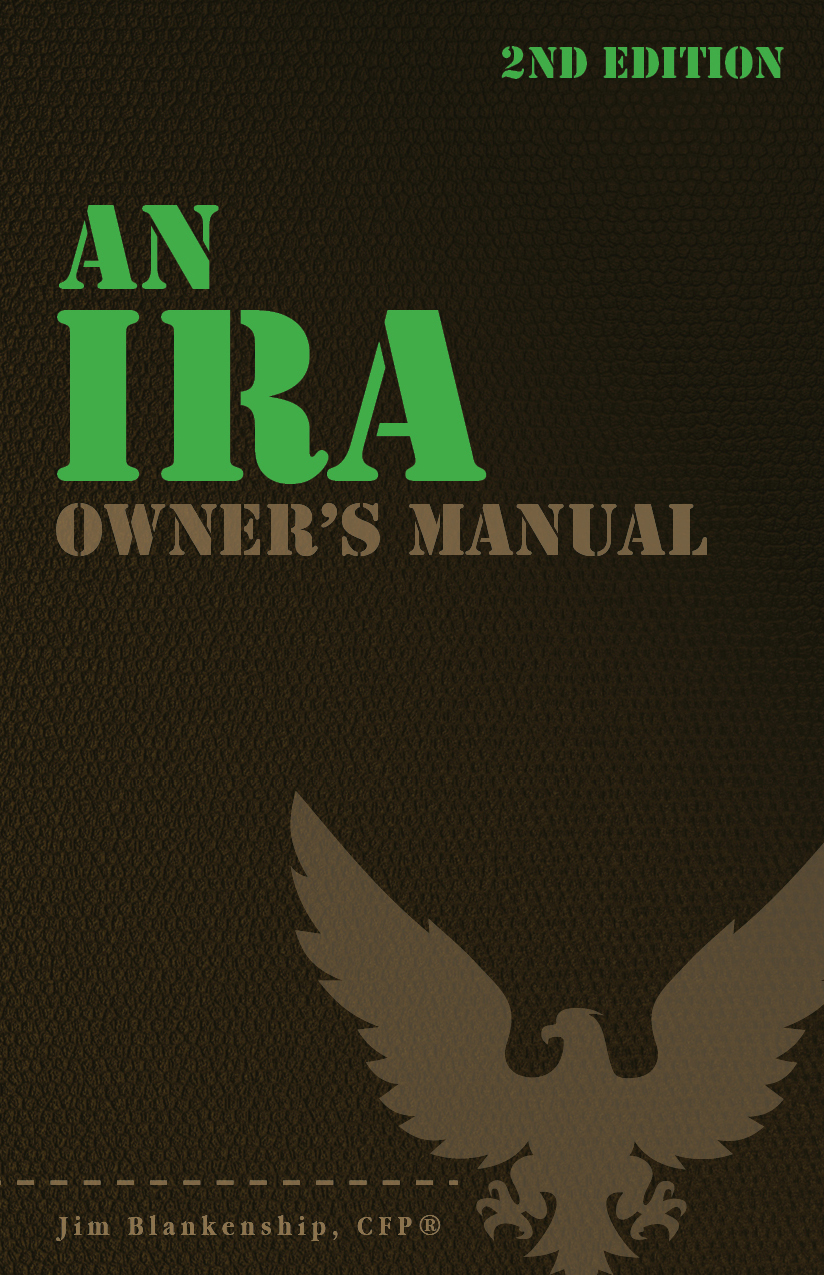 When you first reach age 65, assuming you have met the coverage requirements you are eligible for Medicare enrollment. There is a specific period of time that you’re allowed to enroll. After that period you can still enroll, but there can be penalties. That is, unless you have had “creditable” coverage during the period when you were eligible – usually an employer’s plan. This creditable coverage has to meet certain minimums.
When you first reach age 65, assuming you have met the coverage requirements you are eligible for Medicare enrollment. There is a specific period of time that you’re allowed to enroll. After that period you can still enroll, but there can be penalties. That is, unless you have had “creditable” coverage during the period when you were eligible – usually an employer’s plan. This creditable coverage has to meet certain minimums.
Often, employer medical plans require members over age 65 to enroll in Medicare, so that the employer plan will be secondary to Medicare when the member is eligible. This puts the employer plan into the position of acting as a supplemental plan, and Medicare takes precedence in coverage over the employer plan.
Keep in mind that when you enroll in Medicare, you should have started the process some time before the initial enrollment period by crafting a Medicare plan. Specifically, you need to make sure you have made the decisions about Medigap coverage and/or to take part in Medicare Advantage. If going with Medigap, you should have this already settled and ready to go into effect when your Medicare kicks in.
Medicare Enrollment Period
There is a seven month period for your initial enrollment in Medicare. This seven months encompasses 3 months before the month when you reach age 65, the month of your 65th birthday, and the three months following the month you reach age 65. So if your birthday is in June, you have from the beginning of March until the end of September to complete your initial Medicare enrollment.
Medicare Part A can be applied for at any time after your initial enrollment period begins. If fully-insured, this coverage is free, with no premium paid. You might have delayed enrollment due to employment with an employer of more than 20 employees, giving you a waiver from the enrollment requirement. As soon as your employer coverage ends, you should enroll in Part A as soon as possible (as long as you have 10 years of covered employment).
However, if you are in a position where you don’t have fully-insured status, that is, if you don’t have the minimum 40 quarters of covered employment, Part A will cost a premium for you. Enrollment for paid Part A coverage must be completed within the initial enrollment period or one of the annual enrollment periods following your initial enrollment period.
Part B enrollment, which always has a premium cost to the enrollee, must be completed during the initial enrollment period (when eligible) or a penalty premium will be applied to your Part B premium for the rest of your life. If you do not enroll for Part B during the initial enrollment period, you are only allowed to enroll during one of the annual enrollment periods.
The penalty for late Part B enrollment applies for the remainder of time that you are covered by Part B. The penalty is 10% for each full 12 month period that you delay enrollment. For example, if your initial enrollment ended on September 30, 2018 and you wait until the annual enrollment period for 2020 (ending March 31, 2020), you will have a Part B premium penalty of 20%. Even though 30 months passed since the end of your initial enrollment period, only two 12-month periods passed, so the penalty is 20%. The penalty may be waived (see below) depending on why you delayed enrollment.
Must do’s (and don’ts)
Automatic enrollment in Part A occurs for anyone who is collecting or has just filed to collect Social Security retirement or disability benefits when reaching age 65. This includes spouses and survivors receiving Social Security benefits based on a spouse or ex-spouse’s record.
There is no automatic enrollment in Part B – you must actually file an application for Part B and determine how premiums are to be paid. If you are collecting SS benefits (as above), Part B premium is automatically deducted from your monthly benefit payment. If you’re in a position to have to pay for Part A, this premium will also be deducted from your monthly Social Security benefit.
Otherwise, if not collecting Social Security benefits, you must apply for your Medicare coverage during the period of enrollment. Payment must be arranged separately – monthly payment of the Part B (and Part A if you’re required to pay for it) must be done by check or automatic deduction from your bank account.
Keep in mind that when you enroll in Medicare, your eligibility to participate in a High Deductible Health Plan (HDHP) and make Health Savings Account (HSA) contributions is eliminated. Actually, upon your initial Medicare enrollment, you are not allowed to make HSA contributions. This is where you need to pay attention: if your Part A enrollment occurred because you filed for Social Security benefits, you need to be careful about the date that your Social Security benefits begin to be paid.
In some cases Social Security may pay you up to six months’ benefits in arrears if you were eligible for benefits that far back and you haven’t specified that you don’t want the back-benefits. What this does is to re-set your filing date to six months ago, and your Medicare enrollment will be back-dated as well (assuming you were eligible at that time). If you made HSA contributions during that period, you may owe penalties for those contributions that are now disallowed.
You can still use the HSA money to pay qualified medical expenses, you just can’t make new contributions. And if your spouse has not gone through Medicare enrollment, he or she can still make HSA contributions while still eligible.
Penalties and waivers
The Part B penalty for late enrollment was described above – it amounts to 10% added to the premium for Part B for each complete 12-month period that you have delayed your enrollment.
If you’re not eligible for the free Part A Medicare coverage and you delay signup until some time after your initial enrollment period, you will be subject to a premium increase penalty. This penalty is 10% of the premium, and it will apply for twice the number of years that you were eligible but did not sign up.
So if you waited two years (after initial eligibility) to sign up for paid Part A of Medicare, you’ll have to pay a premium that is 10% higher for four years. After 4 years your premium will revert to the non-penalty level.
Waiver of penalty for Part B (and paid Part A) may be available if you have had creditable employer medical insurance coverage and your employer has 20 or more employees. Discuss this with your benefits department – some employer plans do not meet the requirements to delay filing without penalty. Many employer plans require that you file for Part A & B when eligible and thus operate as a supplemental plan to Medicare. However, some plans (specifically for employers with more that 20 employees) are allowed to step into the place of Medicare, allowing you to delay enrollment without penalty.
This waiver can also apply for a spouse who is covered by the other spouse’s employer plan, as long as the employer plan is creditable coverage and meets the minimums as for the employee.
All retiree coverage requires the member to enroll in Part A & B so that the retiree coverage operates as a supplemental to Medicare. This applies even if your retiree coverage otherwise meets all of the requirements as a creditable plan. This is a “gotcha” that catches a lot of unaware enrollees. The “creditable” option only applies for active employees covered by the employer with more than 20 employees.
One exception to this rule that folks with retiree medical coverage must be enrolled in Part A & B is if you are enrolled in the HMO plan through the Federal Employees Health Benefits Program, this plan may be comprehensive enough to waive the required Part B enrollment. If you change your plan and decide to enroll in Part B later, you may still have the penalty for late enrollment applied.
 When you have Medicare Part B, your insurance pays for doctors, outpatient care and medical equipment not covered by Part A. But Medicare Part B doesn’t cover all the costs for this care. There is a deductible and coinsurance that you have to cover. If you have a Medigap policy or Medicare Advantage (Part C), some or all of these deductibles and coinsurance may be covered as part of that policy.
When you have Medicare Part B, your insurance pays for doctors, outpatient care and medical equipment not covered by Part A. But Medicare Part B doesn’t cover all the costs for this care. There is a deductible and coinsurance that you have to cover. If you have a Medigap policy or Medicare Advantage (Part C), some or all of these deductibles and coinsurance may be covered as part of that policy.
 When you have Medicare Part A, this insurance pays for hospital care, including skilled nursing facilities and other institutional settings. But Medicare Part A doesn’t pay for everything – you must pay a deductible and coinsurance when you have a claim. If you have a Medigap policy or Medicare Advantage (Part C), some or all of the deductible and coinsurance may be covered as part of that policy.
When you have Medicare Part A, this insurance pays for hospital care, including skilled nursing facilities and other institutional settings. But Medicare Part A doesn’t pay for everything – you must pay a deductible and coinsurance when you have a claim. If you have a Medigap policy or Medicare Advantage (Part C), some or all of the deductible and coinsurance may be covered as part of that policy. The recently-passed
The recently-passed  The Social Security system has provisions for taking care of surviving spouses of workers who have earned credits under the system. There are two particular benefits that you should be aware of – a small death benefit of $255, and Survivor Benefits based upon the worker’s Primary Insurance Amount. It is the latter benefit that we are discussing today.
The Social Security system has provisions for taking care of surviving spouses of workers who have earned credits under the system. There are two particular benefits that you should be aware of – a small death benefit of $255, and Survivor Benefits based upon the worker’s Primary Insurance Amount. It is the latter benefit that we are discussing today. Earlier this year I wrote about checking your withholding and estimated payments in light of the changes to the tax laws. When I wrote that, many of you were in the middle of finishing up your tax returns, so I imagine it probably went by the wayside. Now, since we’re 2/3 of the way through the year, is a perfect time for a paycheck checkup! Plus, if you’re retired, it’s a good time for a review of your estimated taxes as well. Since you have 4+ months left in the year, you can make adjustments if needed.
Earlier this year I wrote about checking your withholding and estimated payments in light of the changes to the tax laws. When I wrote that, many of you were in the middle of finishing up your tax returns, so I imagine it probably went by the wayside. Now, since we’re 2/3 of the way through the year, is a perfect time for a paycheck checkup! Plus, if you’re retired, it’s a good time for a review of your estimated taxes as well. Since you have 4+ months left in the year, you can make adjustments if needed.
 So, what funds can be rolled over from your qualified retirement plan (not an IRA) into another retirement plan or IRA? Interestingly, the IRS doesn’t specifically tell you what can be rolled over – but rather, what cannot be rolled over. So the definition of eligible rollover distributions includes any monies from a qualified account that are not specifically disallowed.
So, what funds can be rolled over from your qualified retirement plan (not an IRA) into another retirement plan or IRA? Interestingly, the IRS doesn’t specifically tell you what can be rolled over – but rather, what cannot be rolled over. So the definition of eligible rollover distributions includes any monies from a qualified account that are not specifically disallowed. When you have a non-SS-covered pension and you are receiving Social Security benefits, either WEP (
When you have a non-SS-covered pension and you are receiving Social Security benefits, either WEP (
 You’re going through a lot, having to deal with your spouse’s passing… and you have plenty of decisions that have to be made with regard to handling his or her final affairs. All of the financial stuff must be dealt with as the will or probate determines, and you (or the estate’s representative) have to work through all of those arrangements. It’s difficult to deal with all of these things, but you have to do so. But there’s a bit of good news for you: you don’t have a deadline for spousal IRA. You can take your time dealing with the IRA(s) that you have inherited yourself.
You’re going through a lot, having to deal with your spouse’s passing… and you have plenty of decisions that have to be made with regard to handling his or her final affairs. All of the financial stuff must be dealt with as the will or probate determines, and you (or the estate’s representative) have to work through all of those arrangements. It’s difficult to deal with all of these things, but you have to do so. But there’s a bit of good news for you: you don’t have a deadline for spousal IRA. You can take your time dealing with the IRA(s) that you have inherited yourself.

 Recently we talked about the
Recently we talked about the 
 It’s usually best, for most things in the financial world, to act now rather than waiting around. The notable exception is with regard to applying for Social Security benefits. This is not to say that it’s always (or ever) best to delay benefits – but there can be cases where delaying pays off in spades.
It’s usually best, for most things in the financial world, to act now rather than waiting around. The notable exception is with regard to applying for Social Security benefits. This is not to say that it’s always (or ever) best to delay benefits – but there can be cases where delaying pays off in spades. When you first reach age 65, assuming you have met the coverage requirements you are eligible for Medicare enrollment. There is a specific period of time that you’re allowed to enroll. After that period you can still enroll, but there can be penalties. That is, unless you have had “creditable” coverage during the period when you were eligible – usually an employer’s plan. This creditable coverage has to meet certain minimums.
When you first reach age 65, assuming you have met the coverage requirements you are eligible for Medicare enrollment. There is a specific period of time that you’re allowed to enroll. After that period you can still enroll, but there can be penalties. That is, unless you have had “creditable” coverage during the period when you were eligible – usually an employer’s plan. This creditable coverage has to meet certain minimums.
 Summertime brings a break from school, and for many students that also means working. During the summer months, a student can make some pretty good money – maybe enough to help pay for the next semester of school, or saving up toward a replacement for the old car they’ve had for a while. It should also be part of the plan to save some of the earnings for longer-term concepts – a house in the future, and yes, even retirement. This is where a Roth IRA for a student comes into play, and it can really make a lot of sense when you look at it.
Summertime brings a break from school, and for many students that also means working. During the summer months, a student can make some pretty good money – maybe enough to help pay for the next semester of school, or saving up toward a replacement for the old car they’ve had for a while. It should also be part of the plan to save some of the earnings for longer-term concepts – a house in the future, and yes, even retirement. This is where a Roth IRA for a student comes into play, and it can really make a lot of sense when you look at it. Do you need a Medicare plan? It’s standardized social insurance, isn’t it?
Do you need a Medicare plan? It’s standardized social insurance, isn’t it? Recently the Social Security Trustees released the
Recently the Social Security Trustees released the 
 Sterling Raskie, MSFS, CFP®, ChFC®
Sterling Raskie, MSFS, CFP®, ChFC® The latest in our Owner’s Manual series, A 401(k) Owner’s Manual, was published in January 2020 and is available on
The latest in our Owner’s Manual series, A 401(k) Owner’s Manual, was published in January 2020 and is available on  A Medicare Owner’s Manual, is updated with 2020 facts and figures. This manual is available on
A Medicare Owner’s Manual, is updated with 2020 facts and figures. This manual is available on  Social Security for the Suddenly Single can be found on Amazon at
Social Security for the Suddenly Single can be found on Amazon at  Sterling’s first book, Lose Weight Save Money, can be
Sterling’s first book, Lose Weight Save Money, can be  An IRA Owner’s Manual, 2nd Edition is available for purchase on Amazon. Click the link to choose the
An IRA Owner’s Manual, 2nd Edition is available for purchase on Amazon. Click the link to choose the  Jim’s book – A Social Security Owner’s Manual, is now available on Amazon. Click this link for the
Jim’s book – A Social Security Owner’s Manual, is now available on Amazon. Click this link for the  And if you’ve come here to learn about queuing waterfowl, I apologize for the confusion. You may want to discuss your question with Lester, my loyal watchduck and self-proclaimed “advisor’s advisor”.
And if you’ve come here to learn about queuing waterfowl, I apologize for the confusion. You may want to discuss your question with Lester, my loyal watchduck and self-proclaimed “advisor’s advisor”.